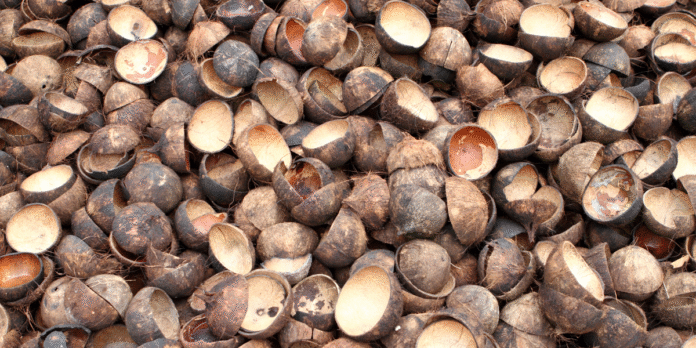What Kerala has managed to achieve with its coconut shells is nothing short of remarkable. Once treated as kitchen waste or fuel for the traditional hearth, these shells today command record prices in Kerala’s markets, fetching up to Rs 35 per kilogram. The transformation of a discarded byproduct into an industry-driven export commodity has not only brought profits to traders and farmers but also revealed how overlooked resources can generate new streams of income.
This sudden rise in demand has been linked to the use of shells in producing activated carbon, a high-value product used in water purification, cosmetics, and industrial filtration. Traders in Kerala say buyers from Tamil Nadu, Karnataka, and even overseas markets like China and Taiwan are driving the surge. In some towns, shells are now stored carefully in households, collected by small-scale entrepreneurs, and sold online.
For the Andaman and Nicobar Islands, where coconut is produced in abundance and is deeply tied to culture, agriculture, and livelihoods, Kerala’s example raises an important question: can the islands replicate this model?
Currently, coconuts in the Andamans are mostly sold for oil extraction, copra, or direct consumption. The shell, more often than not, is burnt, discarded, or used only in small-scale craft industries. But if the market potential demonstrated in Kerala is any indication, the islands may be overlooking a valuable resource. By organizing a systematic chain for collecting, processing, and exporting coconut shells, Andaman could unlock a new income stream for farmers, women self-help groups, and local entrepreneurs.
The demand for activated carbon is not expected to slow down. Industries in India and abroad rely heavily on high-quality carbon sourced from coconut shells, which are known for their density and purity. With the islands producing coconuts across South Andaman, Middle Andaman, and Nicobar, there is scope to establish small-scale processing units that can supply to mainland exporters or even directly to foreign markets.
Moreover, a coconut shell industry could align well with the government’s emphasis on self-reliance and sustainable livelihoods in the islands. Setting up cooperatives or linking farmer-producer organizations with traders might create the framework for collection and bulk sales.
The potential also extends to employment generation. With youth in rural and semi-urban areas often seeking limited job opportunities, coconut shell processing could offer part-time and full-time work, particularly for women engaged in household-based enterprises. Even local startups could step into the online marketplace, just as their counterparts in Kerala are doing, to connect households storing shells with bulk buyers.
Yet, challenges remain. The islands lack large-scale processing infrastructure, and transport costs to the mainland are higher than in Kerala. To make the industry competitive, support in logistics, subsidies, or tie-ups with export houses would be crucial. A pilot project supported by government schemes could demonstrate the feasibility before scaling up.
With Onam in Kerala turning the coconut economy into a talking point, the lesson for Andaman is clear: value addition is often hidden in what we discard. If Kerala can turn waste into wealth, there is little reason why the islands cannot carve out a similar opportunity. For a territory already branded as a coconut-growing hub, the time may have come to rethink how every part of the nut, from oil to shell, can be monetised.
The story of Kerala’s coconut shells shows that prosperity can be hidden in plain sight. Whether the Andaman and Nicobar Islands choose to follow that trail could determine how effectively they harness their natural bounty in the years ahead.





